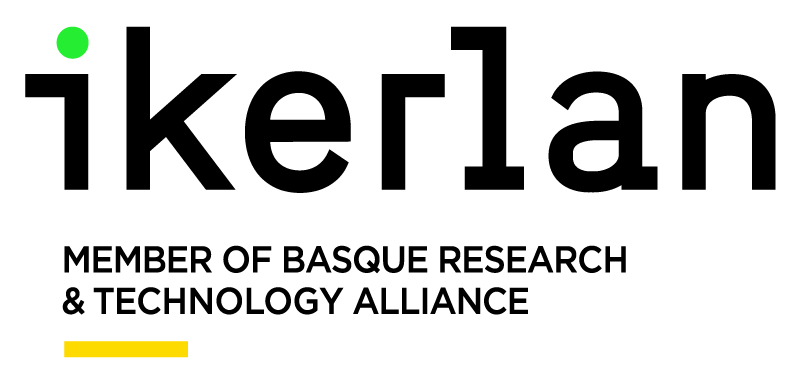
i4Q Rapid Quality Diagnosis¶
General Description¶
The Rapid Quality Diagnosis solution (i4QQD) is a microservice aiming to provide an efficient rapid diagnosis on possible causes of failures, on manufactured products quality, and on manufacturing process conditions. Specifically, i4QQD incorporates intelligent techniques to improve the final product quality by applying state-of-the-art Machine Learning (ML) techniques on industrial sensor signals. Moreover, it conducts advanced statistical analysis (e.g., causality analysis) on machine parameters and on manufacturing conditions to infer the most influencing parameters on products quality. This mechanism is crucial since usually complex relationships and erratic dynamics govern industrial data, while exact patterns of signals evolution through time are not profound and latent factors affecting the overall manufacturing process cannot be directly detected by a human operator. The analysis results are provided to other i4Q solutions (e.g., i4QLRT) or directly to machine operators to optimally reconfigure machine parameters, and to take corrective actions in order to eliminate possible product defects. The i4QQD produces an output comprised by an alert (if a faulty product quality is detected), accompanied with the respective parameter configurations of the observations where the failure is estimated to be present. Last, it provides evaluation visualizations in order to assist machine operators to track closely the overall analysis process. The i4QQD aims to reach three major goals towards zero-defect manufacturing: i) to reduce waste and cost, ii) to eliminate defects, and iii) to optimize the overall production quality. The designing of the i4QQD solution core is based on an extensive survey study related to the recent scientific advances of quality diagnosis in modern industry, which led also to the following work: M. Ntemi, S. Paraschos, A. Karakostas, I. Gialampoukidis, S. Vrochidis, I. Kompatsiaris “ Infrastructure monitoring and quality diagnosis in CNC machining: A review.”, CIRP Journal of Manufacturing Science and Technology, Elsevier, 2022 (Accepted).
Main Features¶
GUI. The i4QQD Solution presents its key functionalities through a user-friendly interface, facilitating user interaction and offering insightful visualizations to communicate analysis results effectively. The UI maintains a consistent structure with other CERTH solutions, such as i4QDIT and i4QIM, ensuring coherence across all platforms.
Data Import. Users can import data from various sources for both static and dynamic data analysis. This includes loading CSV data files from local directories, accessing collections through the MongoDB provided by i4QDR, or retrieving data from the Message Broker.
Static Data Analysis. For users proficient in machine learning operations, the solution allows the splitting of loaded data into train/test sets for training new predictive models or selecting pre-trained models to detect product defects or production issues.
Dynamic Data Analysis. Users less familiar with machine learning operations can utilize the dedicated operator’s tab to observe real-time analytic results of pre-trained ML models that assess the quality status of the production process. These results are automatically stored and accessible through the i4QDR for further examination.
Notifications & Visualizations. In case of production issues or product defects, the tool provides alerts indicating the percentage of samples where a problem has been detected. Additionally, it provides information regarding the model’s internal mechanisms, including feature importances that signify the degree of contribution each feature (sensor) has towards the model’s predictions.
Target Audience¶
The i4QQD Solution is designed to meet the needs of infrastructure personnel, regardless of their level of expertise in machine learning. Whether it’s a data analyst or an engineer, individuals can utilize the tool’s static data analysis functionality to delve into past instances of product defects by examining historical data. Furthermore, they can capitalize on the option to train new ML models, as the tool can be seamlessly integrated and adjusted to operate across different machines. On the other hand, operators can rely on live analytics to maintain a continuous overview of machine status and receive timely alerts about any potential production process issues during their shift.
Comercial information¶
Technical Specifications¶
i4QQD or Rapid Quality Diagnosis, is mapped to the Monitor and Diagnostics subcomponent of the Platform Tier. This solution provides mainly rapid product quality diagnosis and smart alerting when a faulty product quality is detected. It is a micro-service which ensures a highly accurate supervision of the products’ quality during manufacturing processes. It also provides critical parameter configurations which may cause product failures, providing action recommendations for their immediate reconfiguration. It detects product quality failures and produces alerts to notify in time a human operator or other analytical solutions, in order for the required corrective actions to be taken before permanent product failures are present.
Platform Tier: The i4QQD mapping to “Data Brokering and Storage” sub-component ensures that this solution has access to a wide range of manufacturing data. The rich data sources enable the optimization, fine tuning, and generalization of the predictive models, enhancing the reliability product quality diagnosis system. The analysis results of the i4QQD solution can be stored in the i4QDR solution, if such an action is required. The i4QQD mapping to “Data Analytics and Services” sub-component enables the solution to provide the product quality diagnosis results to other analytical i4Q solutions. These results contain critical information about parameter configurations related to product defects and they can be exploited to apply corrective machine reconfigurations or to stop a machine immediately in order to eliminate the production of further product defects. The i4QQD mapping to “Digital Twin Services” sub-component enables the ML and AI models, implemented for the product quality diagnosis, to be trained on simulated data when real manufacturing data are not available. Furthermore, these data can be also utilized to enhance the training performance of the ML models when the sensor data do not suffice to reach a detection accuracy greater than 90%.
Edge Tier: The i4QQD mapping to “Data Management” sub-component involves the effective data pre-processing and feature engineering collected from several sources (e.g., i4QDR, i4QDIT), in order to ensure reliable product quality estimations. Feature engineering along with the related feature importance provide critical insights about parameter configurations about the presence of product defects.
The AI and ML frameworks used in i4QQD have been developed in Python language and they do not have any strict hardware requirements since fast and efficient models have been carefully selected.
Technical Development¶
This i4Q Solution has the following development requirements:
Development Language: Python >= 3.8
Containerization: Docker, Docker Compose
Deployment/Orchestration: -
User Interface: Streamlit
Database engine: i4QDR - MongoDB
Python libraries: Numpy, Pandas, SciPy, JSON, Scikit Learn
License¶
The licence is per subscription of 150€ per month.
Pricing¶
Subject |
Value |
|---|---|
Installation |
110€ (4-8 hours) |
Customisation |
3000€ (approx. 100 hours, depending on the client’s data format, annotated data availability, AI robustness tests) |
Training |
220€ (8-16 hours) |
Associated i4Q Solutions¶
Required¶
Not strict dependencies.
Optional¶
System Requirements¶
Docker requirements:
4 GB Ram
10 GB Storage (at least 5 GB for the Docker container)
64-bit operating system
Hardware virtualisation support
Installation Guidelines¶
Resource |
Location |
|---|---|
First release (v1.0.0) |
|
Second release (v2.0.0) |
|
Final Generic Version |
Installation¶
Decompress the contents of the zip file in a directory.
Include the necessary SSL certificates in the
Certificates/clientfolder to establish a secure connection to the Message Broker (these certificates are generated during the installation of the Message Broker). The required certificates are:
Certificate Authority (PEM file).
Client SSL certificate (PEM file).
Private SSL key (PEM file).
Open a command terminal.
Navigate to the directory where the artefacts have been decompressed from the zip file and locate the solution’s Docker compose file.
Execute the following command to build and run the containers defined in the file.
docker compose up -d
Open a web browser (preferably Google Chrome) and open the URL http://localhost:8503 to access the solution’s web interface.
User Manual¶
Explanation |
Image |
|---|---|
User role selection Based on the expertise of the user, the tool adjusts its functionalities. The data scientist role allows for historical data analysis and the training of new Machine Learning algorithms. On the other hand, the operator data is oriented towards real-time analytics. Data source selection The user can upload data by selecting from a set of different data input options. These options include:
|

|
In the Data Scientist tab, once the data has been loaded, a table is presented containing the entirety of the dataset, along with a slider to adjust the number of data samples. |

|
The user can then select the target variable that will be used in the training process of the detection algorithm. Also, an option to adjust the ratio of training and testing data samples is provided with or without the user of a stratified splitting strategy. |

|
Finally, the user can either choose to train a new AI detection model or select one from the available pre-trained models. Then, the user can observe the samples in which a product defect or a problem during the manufacturing process has been detected, along with the magnitude of contribution that each sensor has towards the predictions of the model. |

|
In the Operator’s tab, the use can select one of the pre-trained AI models and specify the Kafka server and topic to ingest real-time machine sensor data into the platform. |

|
By enabling the stream-analytics, the selected predictive model is evaluating the presence of a product defect or a problem during the manufacturing process in real-time and presents the results through live charts. |

|



